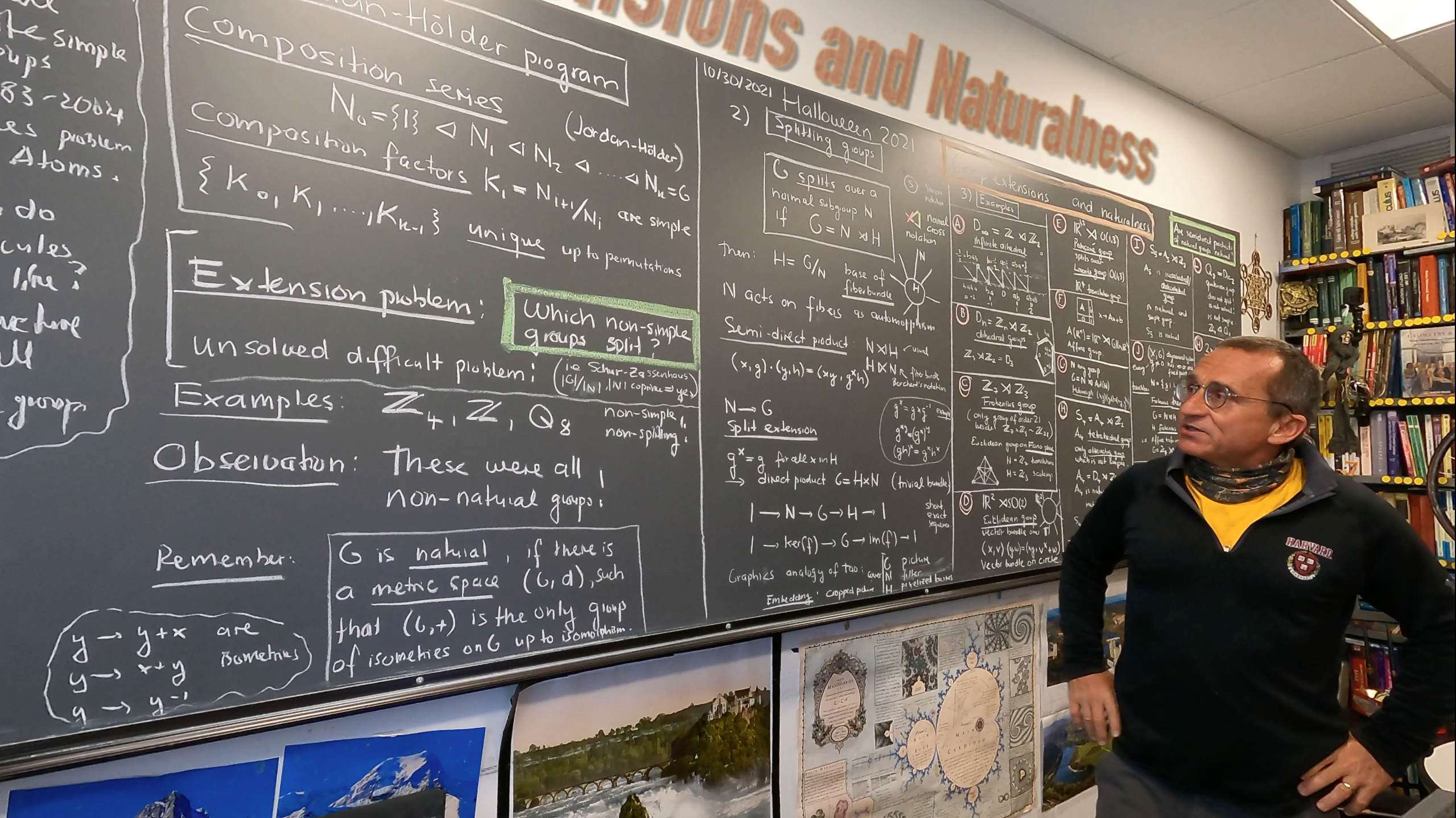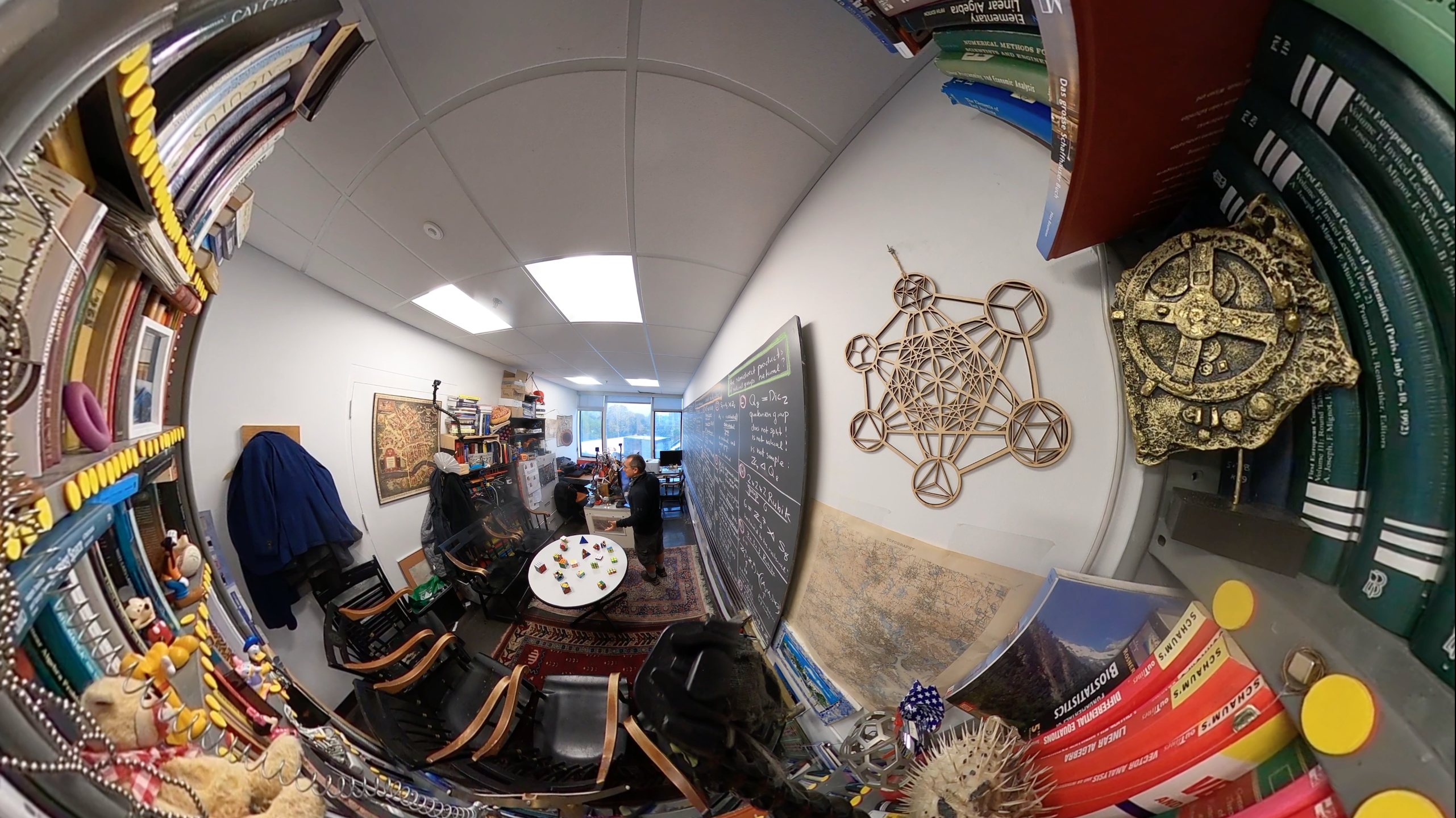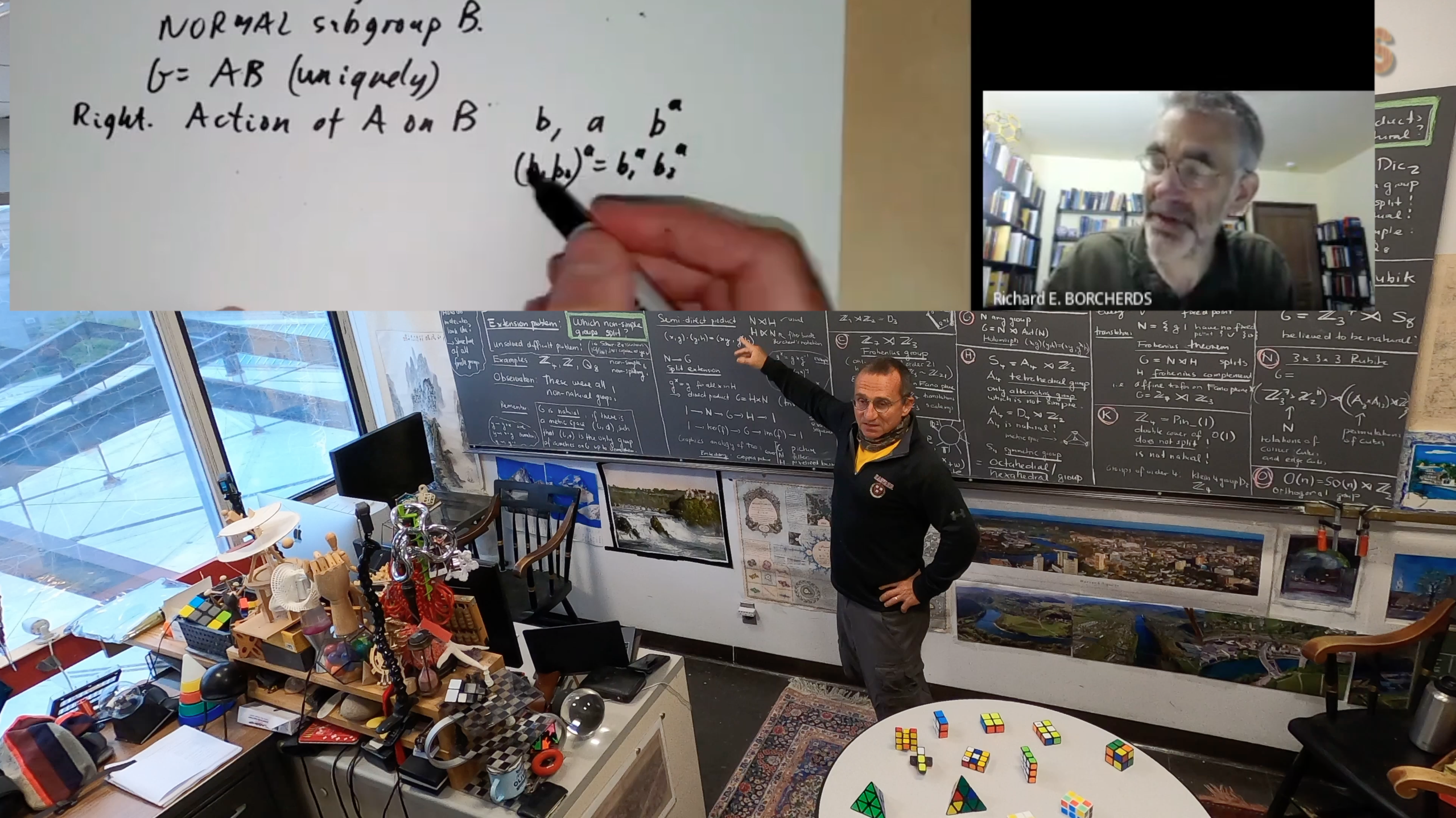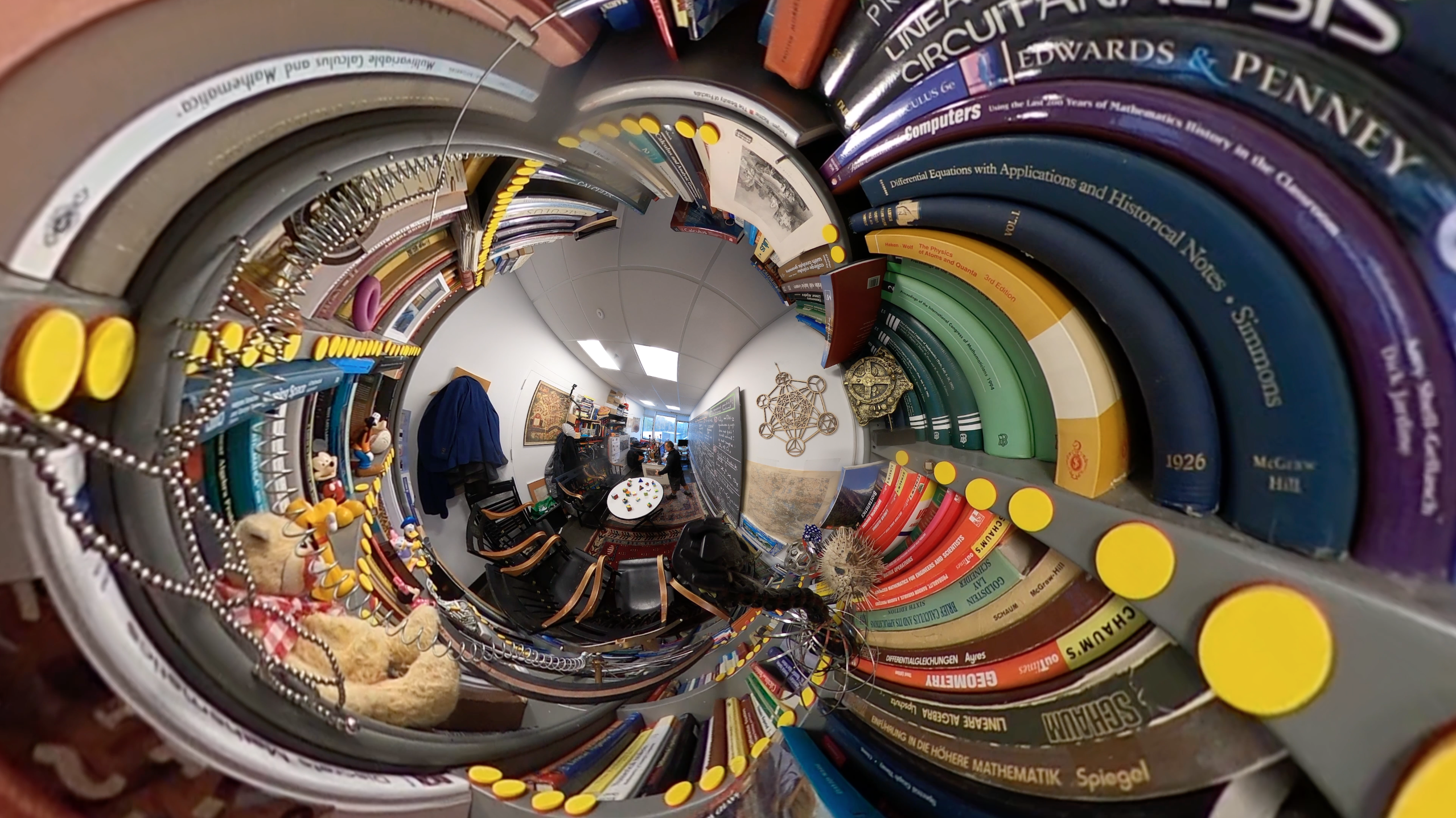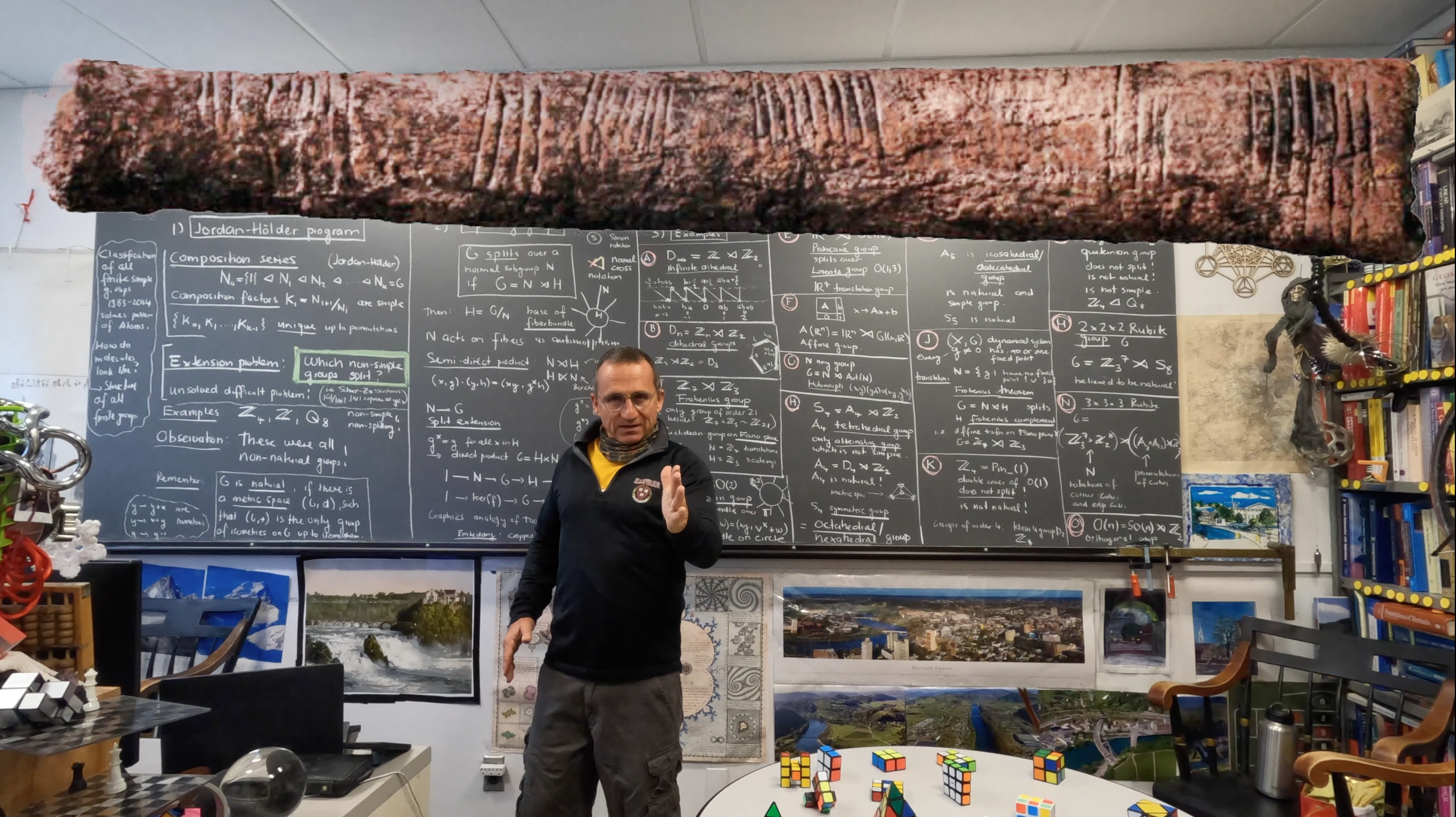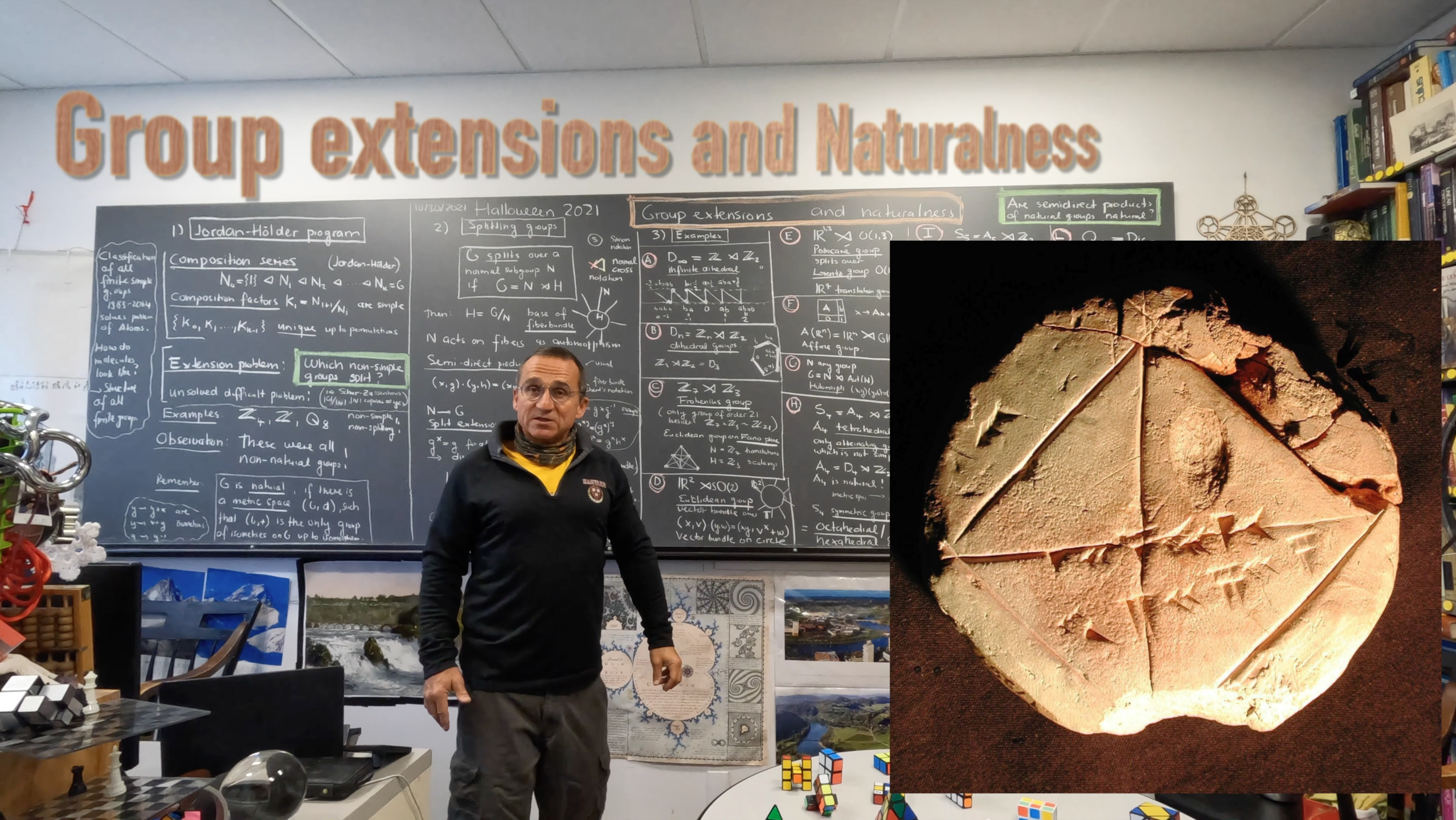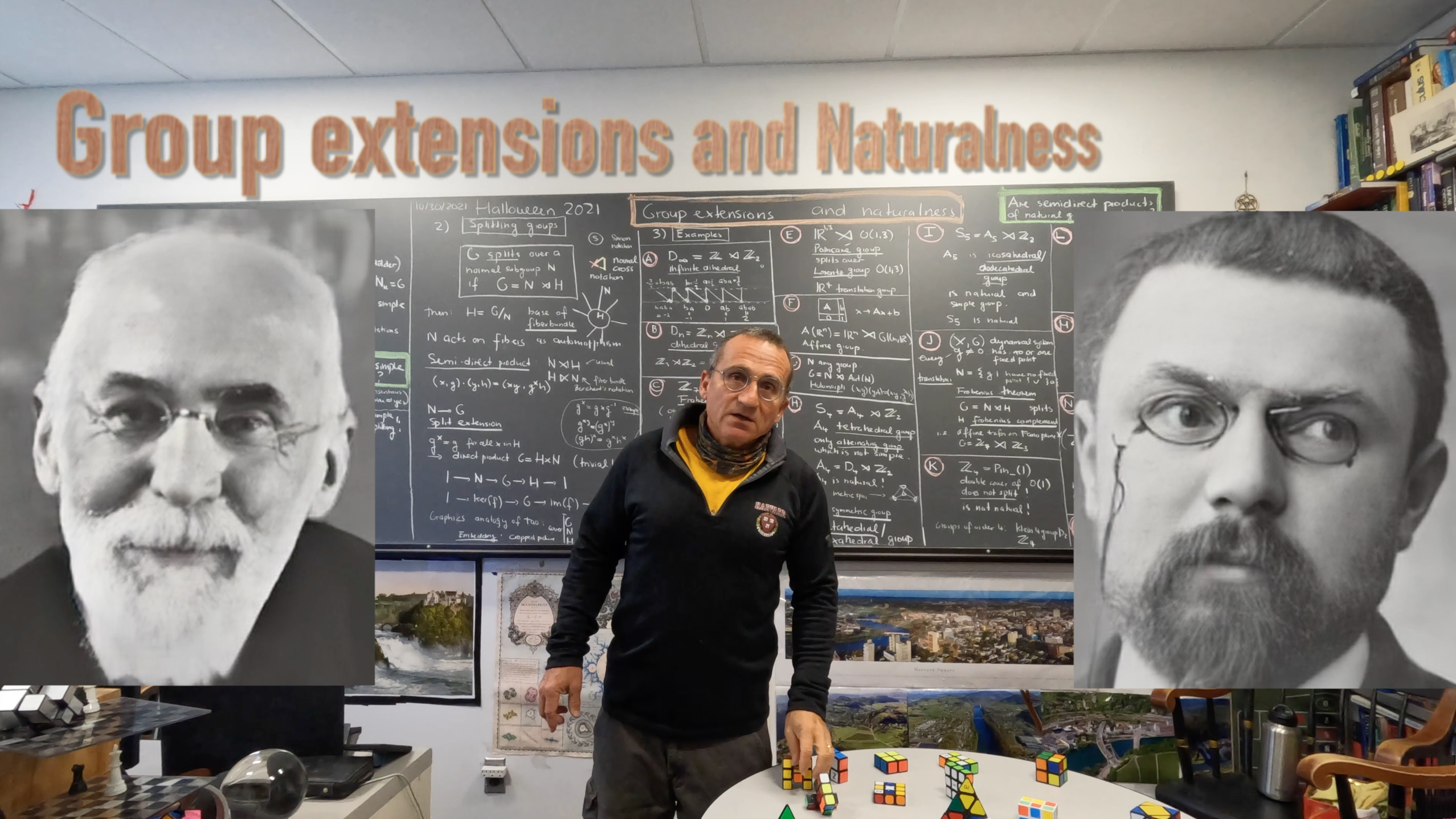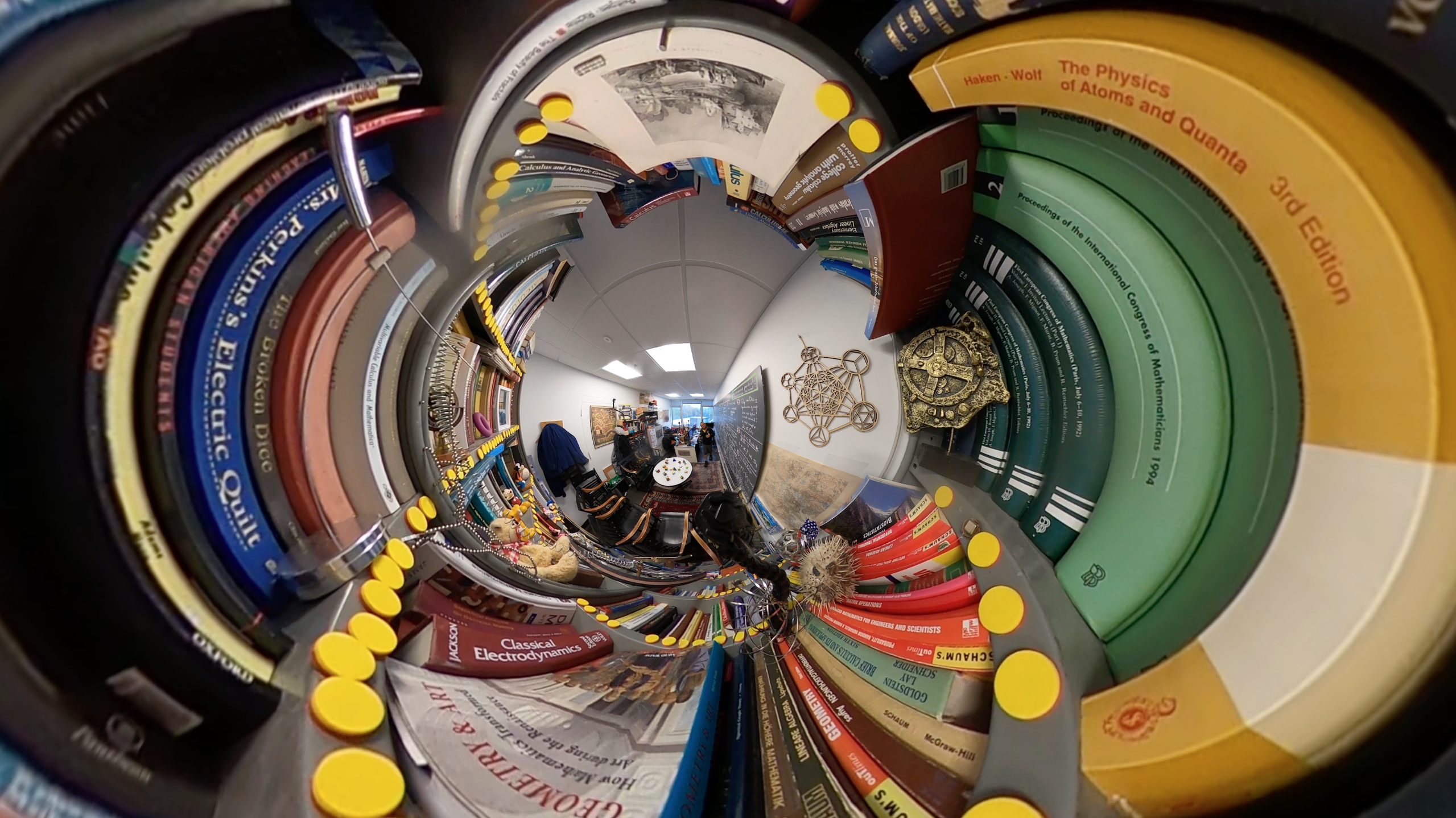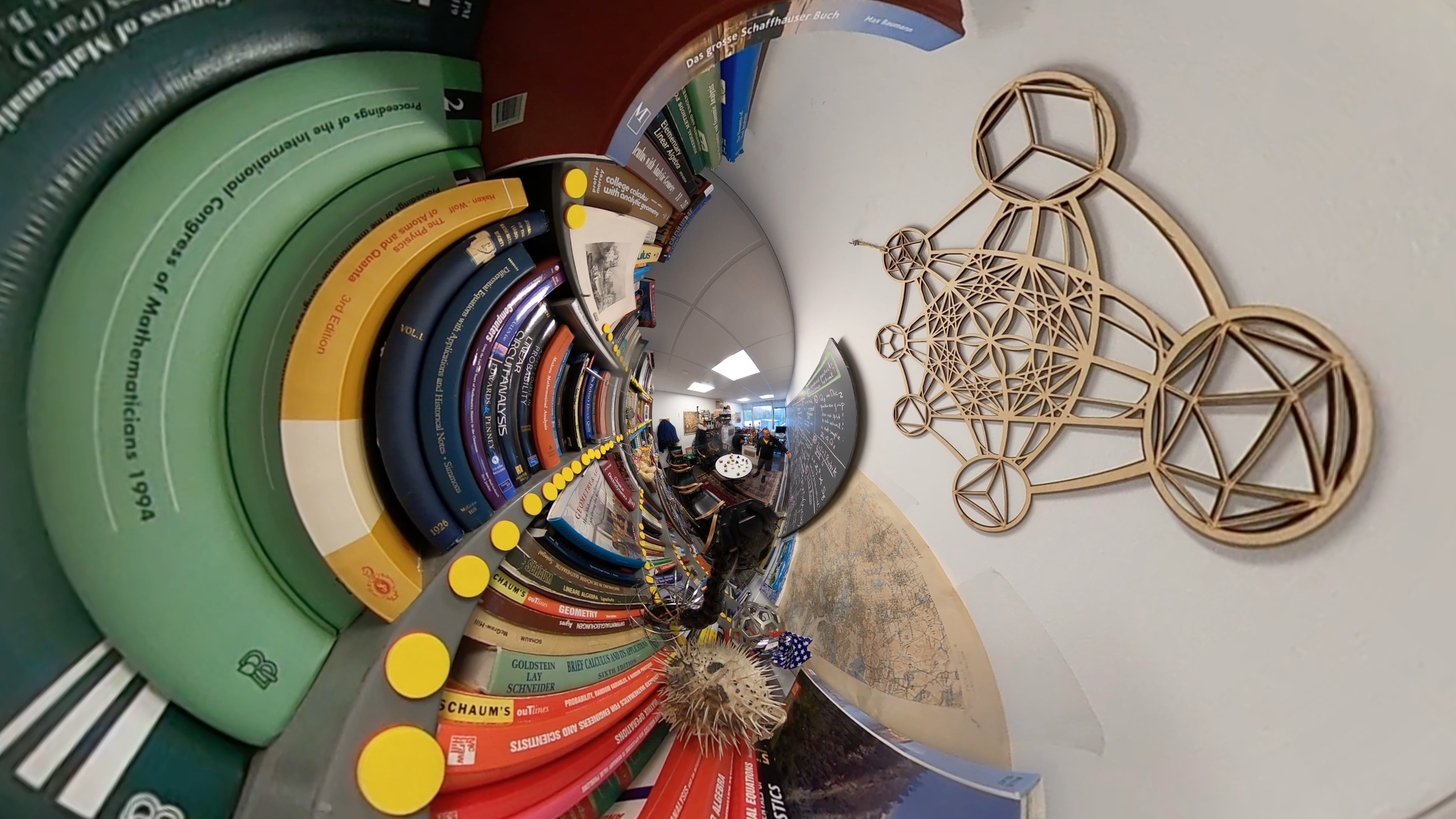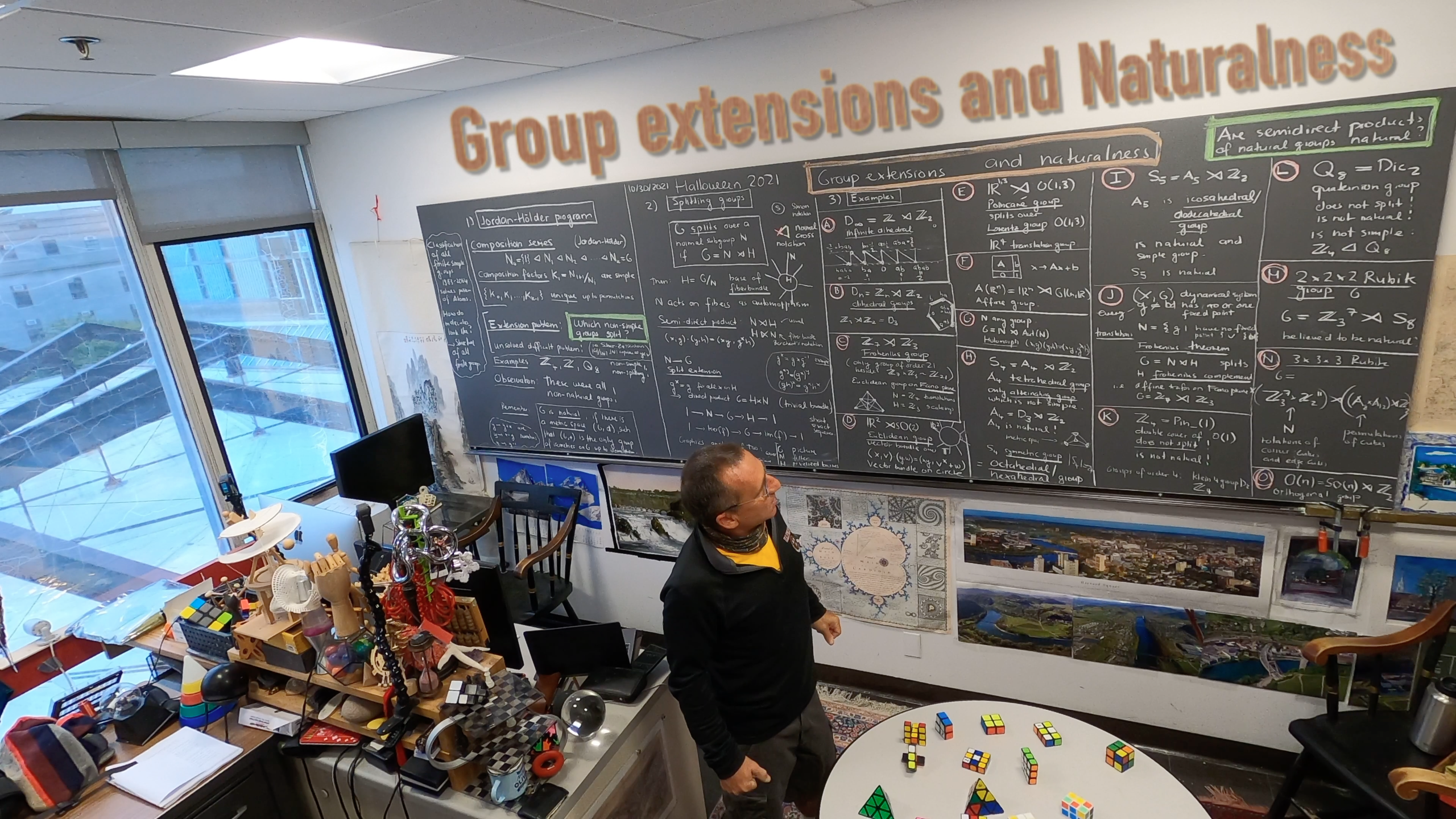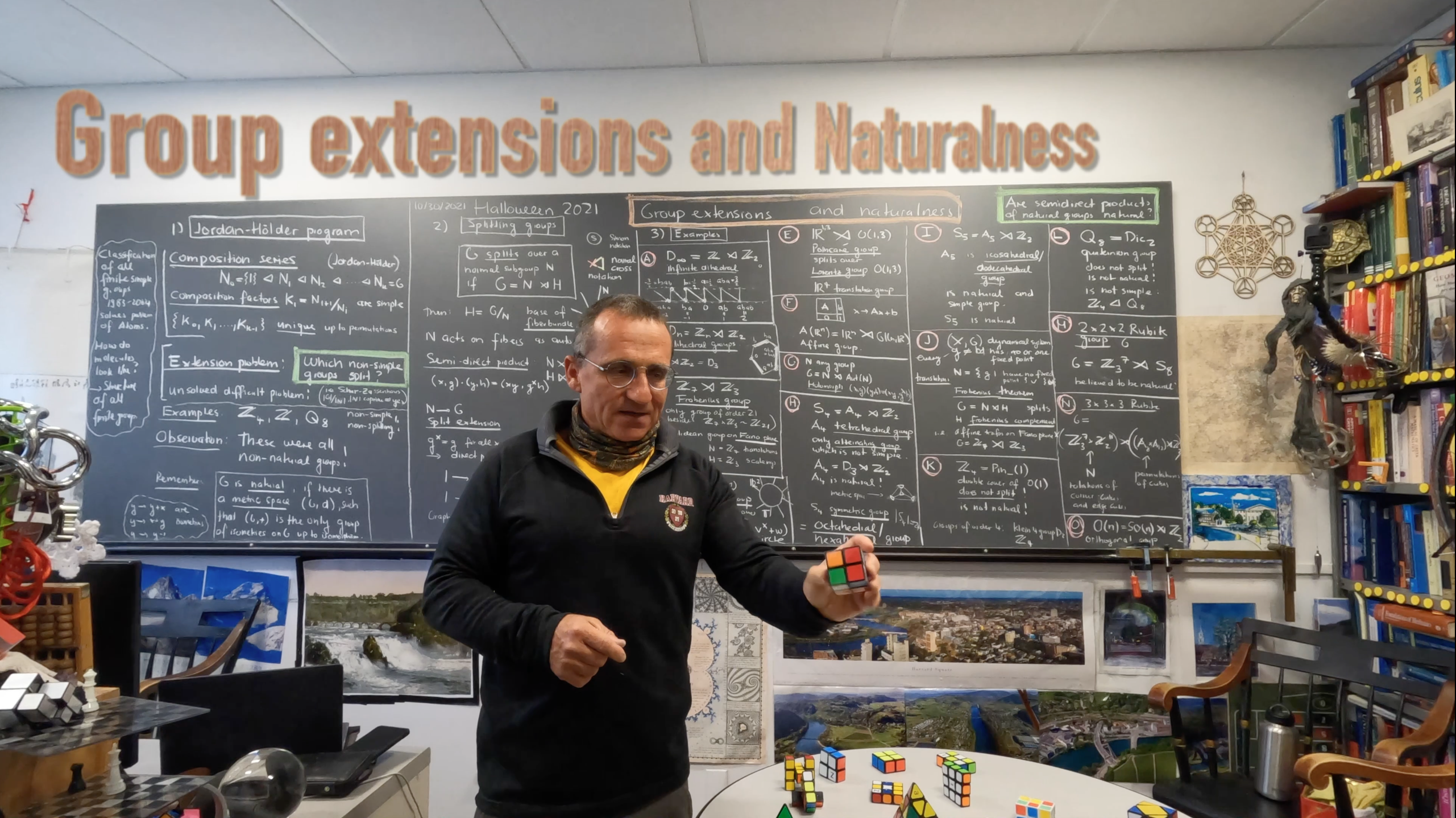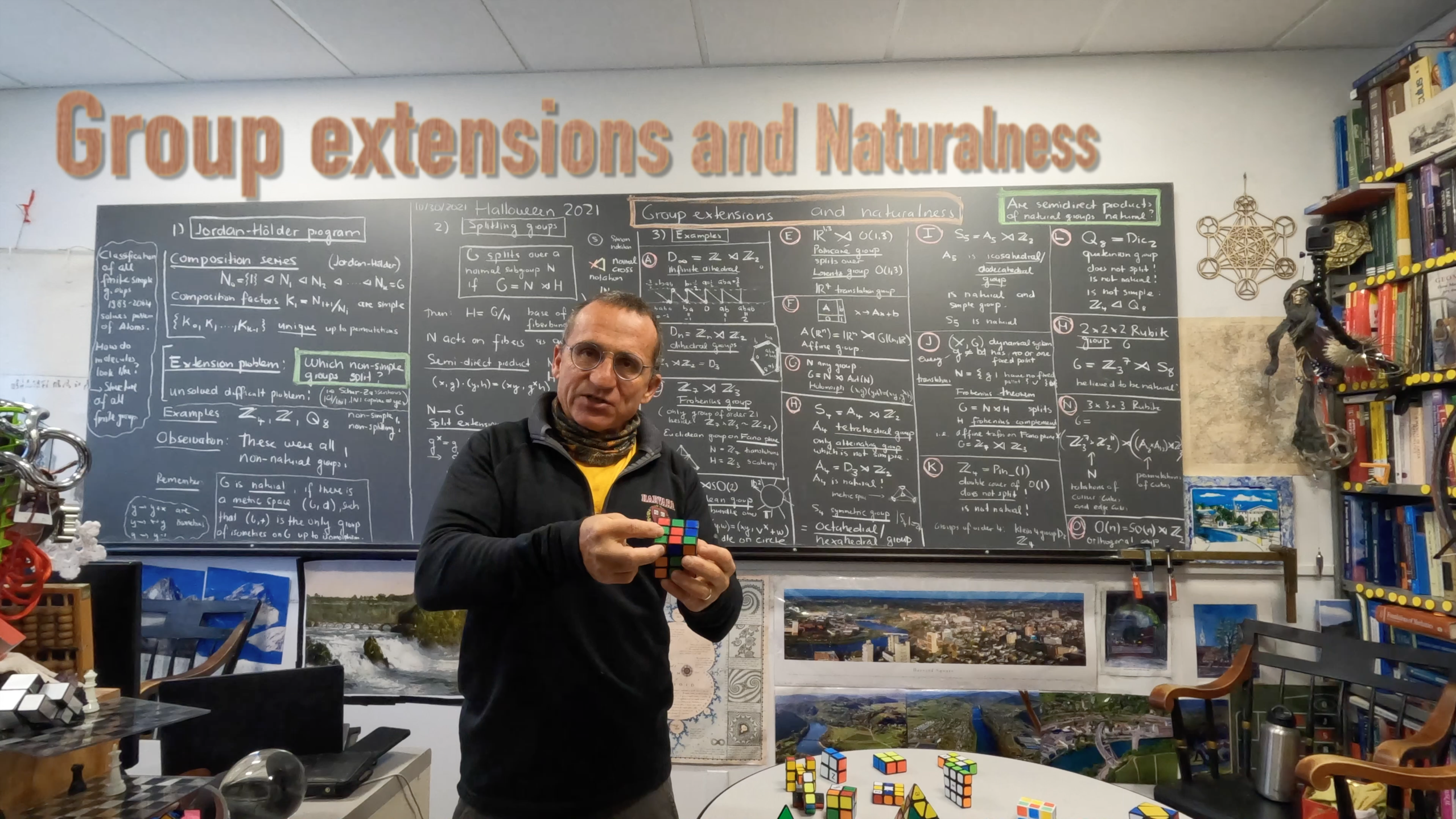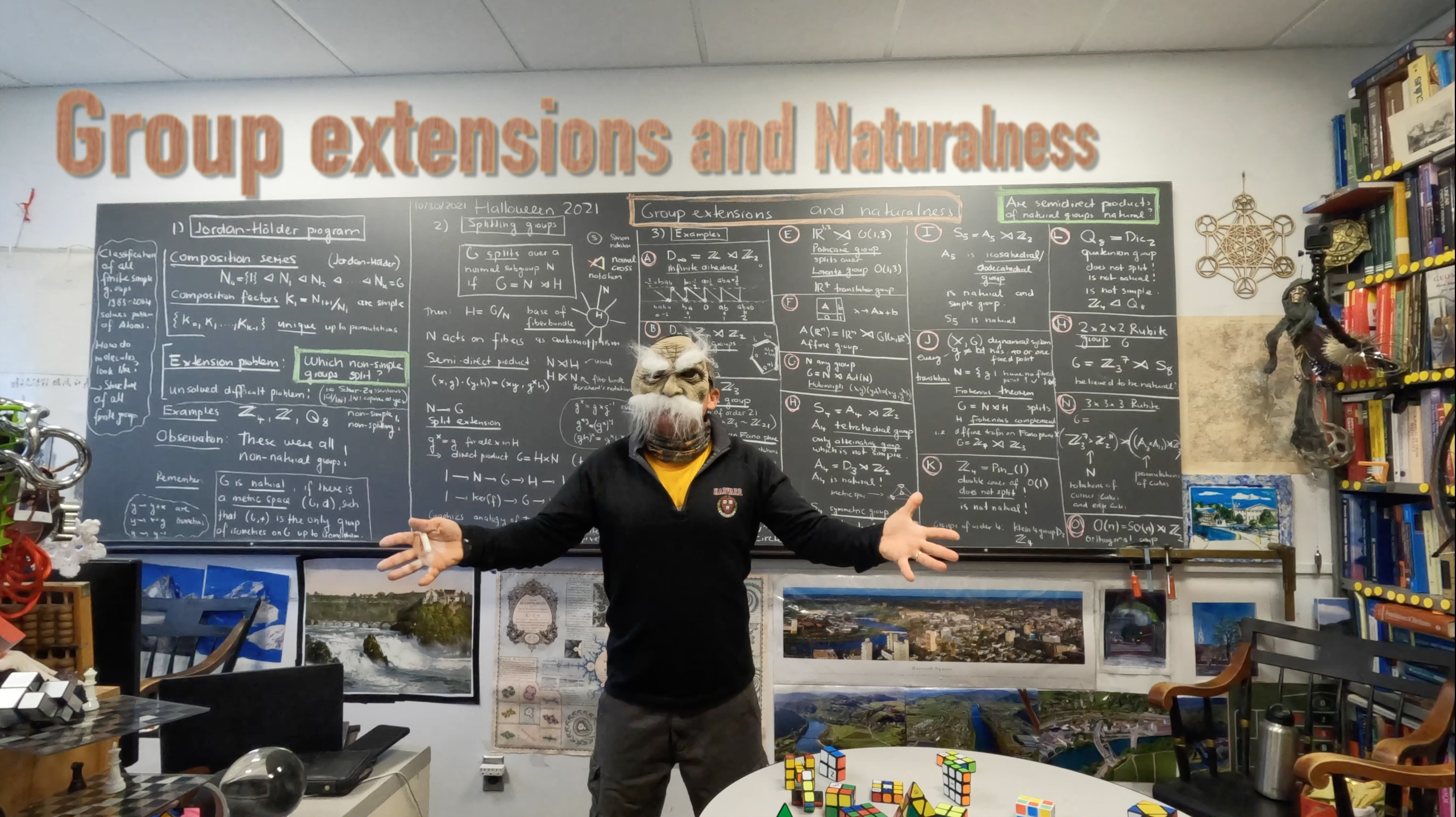A bit about group theory triggered by the observation that some of the non-natural groups are non-simple groups which do not split. The later problem is a central issue in the classification problem of finite groups. While the finite simple groups have been classified in a monster effort and finitalized from 1983 to 2004 with thousands of pages of proofs, the other part of the Jordan-Hoelder program, finding the composition structure of general groups is less understood. The problem are non-simple groups which do not split meaning that they can not be written as a semi-direct product of one of its normal subgroups with the factor. The smallest example is the cyclic group with 4 elements. It has a normal subgroup but can not be a semi-direct product. An other example is the Quaternion group Q8 and a third example are the integers. These are exactly the first three groups I notice to be non-natural: they can not be derived from a metric space itself. It becomes more and more clear that like non-simple, non-splittable groups, also non-natural groups are pretty rare. I want to wrap up this little excursion to group theory soon. Still hope to establish that semi direct products of natural groups are natural. This would imply that groups like the Rubik cube are natural. The Rubik was for me a key objects in high school and one of the triggers to study mathematics. When you have worked out the Rubik cube (of course not by looking up a solution, that is cheating and similar to prove a theorem by looking up the proof rather than finding the proof), then much of the abstract algebra of group theory feels just like running in open doors. Concepts like group extensions appear at the very beginning when looking at the Rubik cube. You look for invariant subgroups for example fixing some sets. These stabilizer groups are normal subgroups. Abstract algebra is actually very well rooted in small kids already. They are very good usually with cracking puzzles like the cube and the reason is that they do not fear yet the time it needs to solve such a puzzle (I needed 3 weeks essentially non-stop, dreaming also at night about the group). I also told at various places (like here [PDF] an earlier version of this paper [PDF]) my adventure in Bern, when I was competing as a graduate student in a contest for solving a Rubik type problem. As a graduate student I had already much less time and needed time for my research. So, I used the computer algebra system Cayley to find a solution to the permutation problem. My computer algebra system gave me a path of length 100. If I would get lost however, I would be lost in that large group and would not be able to continue. The winner of the contest was a cheese maker from Emmental (you can not make this stuff up but it is true) who without any mathematical training could walk around in that non-abelian group much faster than all the rest (and most of the competitors were students).
P.S. I twas a rainy day when recording this and I could not fly my drone outside so that there is some footage from inside the department.









